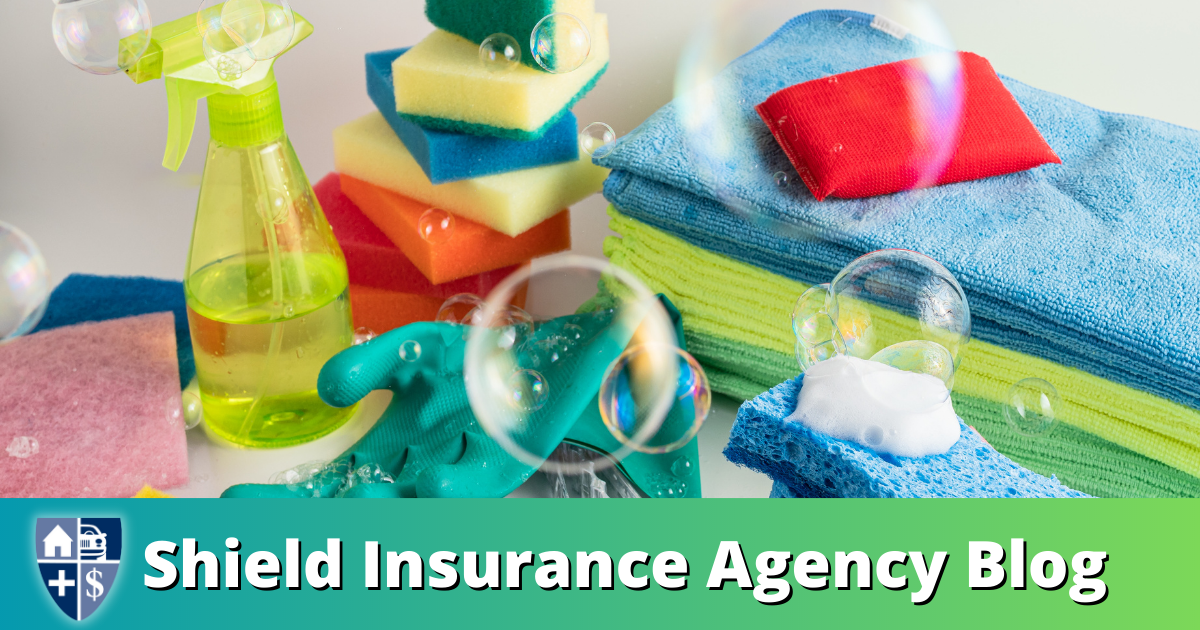
Protect your house with a lightning protection system
Nationwide | March 14, 2022 | lightning | Home Insurance | Start A Quote Today!
What happens if lightning strikes your house
Did you know that every year, the probability of your house getting struck by lightning is 1 in 2001? Luckily, the probability of you getting struck by lightning is only 1 in 500,0002, but that begs the question – what happens if your home is that 1 in 200?
No one wants to think the worst can happen to them, but it’s important to be prepared in the instance lightning does strike because it can wreak havoc on your house, property, and family.
Lightning is extremely common across the U.S., and during severe storms, you can experience dozens of lightning strikes an hour. Lightning can strike just about anywhere, so how can you tell if lightning has struck your own home?
An average flash of lightning is around 300 million volts and 30,000 amps3 in strength. That can do some severe damage. If your home has been struck by lightning, you’ll likely experience the aftereffects almost immediately. These effects include:
- Loud ‘boom’ that shakes the house
- Power outage
- Fire
- A burning smell
- Electrical buzzing
- Charring
- Holes in the roof/walls
- Burnt electrical switches
If you notice any of these signs during a severe storm where lightning is present, it’s important to first call your emergency department to get the fire department and local authorities to your property immediately to ensure everyone is safe.
Once you’ve secured the safety of everyone in the house, you might be wondering what’s going to happen to your property – and you’re not alone. In 2021, there were over 71,0004 insurance claims filed in the U.S. for lightning losses. Luckily, most homeowners insurance policies cover lightning damages.
Nationwide offers comprehensive homeowners insurance coverage to give you peace of mind even during the most harrowing of circumstances.
However, there are steps you can take to protect your home against damaging lightning strikes.
What is a lightning protection system?
A lightning protection system is used to prevent property damage due to lightning. The system works by diverting the electric charge produced by the initial strike to the ground through the path of least resistance5.
An effective lightning protection system comprises four key compartments: copper air terminals, copper cables, copper-clad ground rods, and surge suppressors.
From the outside, the only visible aspect of the system is the lightning rods connected to the chimney or roof.
What are lightning rods?
Lightning rods are used to protect a house against damage from lightning strikes. It’s important to note that these rods don’t prevent lightning from striking, but work to divert the energy the lightning produces so it doesn’t damage your home or property.
Lightning rods must be connected to an accompanying lightning protection system to ensure maximum benefit from electrical surges and damage.
But lightning rods are just one key component of lightning protection.
Electrical surge protection
There are many steps you can take inside the home to protect against lightning damage. In many instances, lightning can cause electrical fires, so ensuring your outlets are protected is key to ensure your entire home is safe against detrimental lightning.
One way to do this is by installing a whole-home surge protector for appliances and electronics throughout the home in the case of voltage spikes. These surge protectors will limit the damaging effects of a power surge to ensure that your appliances don’t die or worse, catch fire.
Additional lightning protection tips
Thunderstorms are a common occurrence across the country, but that doesn’t mean you have to bear the brunt of weather damage.
Always make sure you take shelter during a storm if you aren’t already indoors. Being inside will keep you away from the most harmful aspects of a severe storm.
When you’re in the home, it’s important to avoid water, electronics, corded devices, concrete surface, windows, and doors6. These all provide easy access for lightning strikes to wreak havoc as electrical currents make their way to the ground.
Before your next storm, make sure to catch up on our thunderstorm tips so you can weather the storm with ease and peace of mind.
1http://lightningsafety.com/nlsi_pls/probability.html, Accessed Sep 2021
2https://www.cdc.gov/disasters/lightning/victimdata.html, Accessed Sep 2021
3https://www.weather.gov/safety/lightning-power/, Accessed Sep 2021
4https://www.iii.org/fact-statistic/facts-statistics-lightning, Accessed Sep 2021
5http://www.lightningsystemsofva.com/html/what.htm, Accessed Sep 2021
6https://www.cdc.gov/disasters/lightning/safetytips.html, Accessed Sep 2021
Disclaimer:
The information included is designed for informational purposes only. It is not legal, tax, financial or any other sort of advice, nor is it a substitute for such advice. The information may not apply to your specific situation. We have tried to make sure the information is accurate, but it could be outdated or even inaccurate in parts. It is the reader’s responsibility to comply with any applicable local, state, or federal regulations. Nationwide Mutual Insurance Company, its affiliates, and their employees make no warranties about the information nor guarantee of results, and they assume no liability in connection with the information provided. Nationwide, Nationwide is on your side, and the Nationwide N and Eagle are service marks of Nationwide Mutual Insurance Company. © 2022Nationwide and Shield Insurance Agency
More great blogs by Shield Insurance Agency
- Winterizing Your RV in Michigan: Insurance Tips for Cold Weather Protection
- Trunk or Treat with Patmos Library 2025 — A Spooktacular Night to Remember!
- Stay Safe, Prepared, and Have a Spook-tacular Night!
- Unexpected Winter Preparations You’ll Be Glad You Made
- Fun, Fall, and Festivities at Hudsonville Urban Hay Day!



























































